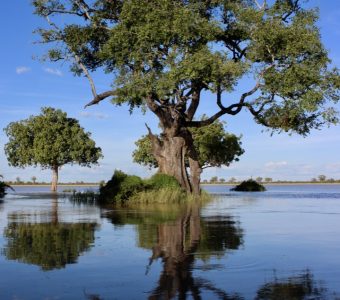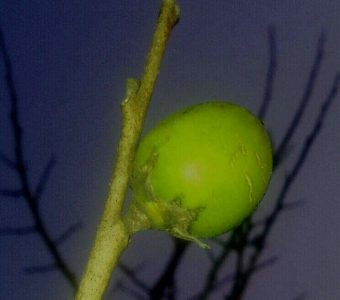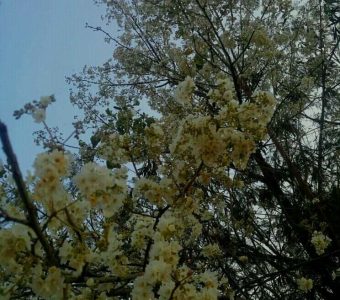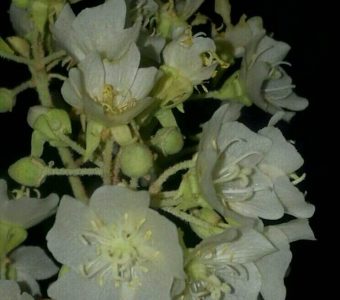



Botanical Name: Diospyros mespiliformis
Common Name: Jackal Berry, Muchenja, Mukyengya, Muchenje, Mupako, Mchenja
Plant Family: Ebenaceae (Ebony Family)
Growth Form, Habitat and Distribution: A tall evergreen or semi-evergreen tree sometimes with a buttressed bole with a rounded crown with new branchlets covered in fine hairs. One of 16 species of Diospyros in Zambia. Occurs widely in riparian habitats, and, in wetter areas, on termiteria. Similar to Mimusops zeyheri but with shorter petiole and darker leaves. Can hybridise with D. kirkii
Size: Height: up to 26m, spread 10 to 15m.
Bark: Brownish darkening with age, becoming grey-brown, rough and fissured, sometimes exuding a dark gum if damaged
Leaves: Alternate, oblong to elliptical, leathery darkish glossy green above, paler below, new leaves pinkish
Flowers: Dioecious, with fragrant, 1 cm creamy, hairy flowers, September to December.
Fruit: Yellow-green, rounded and fleshing 2.5 cm holding 3 to 6 glossy, dark brown seeds.
Uses: The fruits are edible and relished by elephants, most antelope, jackals and baboons and monkeys and frugiverous birds The fruit are widely used in traditional medicine and contain an antibiotic. The wood colour is pinkish to grey, hard, heavy, mostly termite-resistant, workable and can produce a fine finish.
Other Species in Zambia: 16 other species and variants adapted to both high and low rainfall areas. Some are suffrutices.
